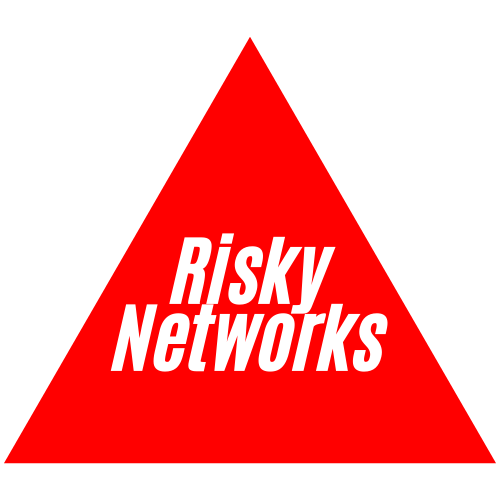ICT and development intersect in many ways and do so increasingly as both technology and development work evolve. This series of articles sheds a light on one aspect of “Development in the digital world”1, or development in a digitalized context: (mis)representations of development and the role of social media platforms and platform mechanisms in them. Are social media logics pushing to harmful practices? Are social media users benefiting from poverty porn? Can social media be used to counter these practices? The series of article reflects on these questions through four different case studies.
Despite its roots already in the 1970s2, social entrepreneurship has become increasingly popular in the last thirty years, to the point of being a real buzzword today. Rather than a type of organization, social entrepreneurship refers to “the pursuit of an opportunity to create pattern-breaking social change regardless of the resources you currently control.” This model has also found its place in the field of development and social change, challenging traditional players in the field. While social entrepreneurship can take many forms, from non-profit to for-profit and local to international, this article will specifically focus on for-profit social enterprises based in the Global North whose mission is related to action in the Global South.
One major advantage of social enterprises compared to traditional NGOs or other organizations is their agility and adaptability as a model built around the entrepreneurial principle of innovation3, as well as the lack of the burden of tradition and established practices born by many players in the field of development. It is no coincidence that social enterprises are on the rise in what Castells characterizes as the “network society”4, as they are better adapted and integrated into the current socio-economic context centered on technology and moving away from traditional hierarchical institutions and constructs of society.

But like everything, social enterprises also have their cons. A major point of criticism for development practitioners and scholars is related to the dilemmas arising from the association of philanthropic goals to commercial ones. Especially in for-profit social enterprises, moral conflicts between values and actions are not uncommon and can result in the worst cases in empty promises and a phenomenon similar to greenwashing from a perspective of CSR.
This moral dilemma becomes particularly apparent in communication and marketing, which take more and more place also on social media. In the same way as for both companies and development organizations, social media presence is important for social enterprises. This nevertheless becomes tricky when social enterprises have to combine in new ways the aims of both previously mentioned actors, namely sales and marketing, but also communicating development. The line between communicating development and marketing is blurred, and communication for development risks becoming a part of marketing to the detriment of the cause. Companies resort to ways of communicating that are efficient from a commercial perspective but are made with the consumer in mind, not the citizen and the beneficiary.
I want to take a moment to reflect on the role of the audience on social media in this case. Social media platforms – partly through the phenomenon of media convergence, partly through their openness and flat, networked structures – bring together all types of users, from individuals to organizations of all sorts, with a huge variety of ways and purposes to use social media. When defining the target of their messages, social media users have to take this diversity of users into consideration. For social enterprises, this means looking at their different stakeholders and defining the ones to prioritize. In a promotional marketing message, the audience will tend to be seen as consumers or potential customers, while in communication for development messages, the target audience is rather composed of citizens, collaborators, or beneficiaries, depending on the nature of the company. Messages are formulated differently depending on their purpose and target, but the challenge of a social enterprise is to always stay true to their mission and consider all stakeholders, even when it comes to marketing. This is crucial to stick to what Peter Karoff calls the first rule of CSR, namely “do no harm”.
An additional challenge for social enterprises operating in the Global South relates to the digital divide. While access to the Internet increases worldwide, certain regions, especially in Africa, still have a clearly lower proportion of the population having access to the Internet5. This digital divide could also affect how well the consideration of all stakeholders is respected. While for a social enterprise whose social impact is based in the Global North, the audience on social media will more generally tend to blend together donors and beneficiaries, those working on social change in the Global South have much fewer representatives of beneficiaries in their audiences. This makes the risks of othering and misrepresentations of development higher and more likely to accentuate the development gap instead of closing it, as these companies are less held accountable about their actions by one major group of stakeholders, the beneficiaries, whose representation in the media is already traditionally prone to faults.
Choosing which audience to primarily addressing is an understandable dilemma as social enterprises have to stay economically viable, and they are competing against purely commercial actors. Some level of prioritizing which stakeholders to address is inevitable, but staying true to their mission and values should always be the primary concern to keep their credibility, the one of social enterprises in general, and truly have a positive impact. Ensuring the respect of all stakeholders involved requires firstly having experts in the field of development on board to counter the possible lack of knowledge and understanding of the field these companies are operating in, but also changing the processes of storytelling employed. As suggested by Alaura Weaver , it is important to switch the processes of storytelling to the hands of those who can tell their own stories. Social enterprises have the great advantage of being the pioneers of new practices, and to live up to their promises, they have to be willing not only to look outwards towards those in society in need of change but also be willing to let go of the reigns and truly include beneficiaries into their social change processes.
In the end, the struggles faced by social enterprises in relation to social media audiences are not much different from those of traditional development organizations as all organizations using social media need to consider questions related to target audiences and stakeholders. This dilemma is nevertheless emphasized in the case of social enterprises placed in between philanthropic and commercial goals. At the same time, it may seem less obvious as they are associated to progressive approaches, and this type of issues can go easier unnoticed. Yet, despite their seemingly progressive approaches, the presence of such a fundamental issue only contributes to displaying how rooted the problem of misrepresentations and lack of empowerment of development beneficiaries is in our society today.
Notes:
1 Roberts, T. (2019). Digital Development: what’s in a name? Appropriating Technology, August 9.
2 Zaki, R. M. (2012). An overview of Social Entrepreneurship. AUC Research Conference, Entrepreneurship & Innovation: Shaping the Future of Egypt.
3 Curtis, T. (2010). The challenges and risks of innovation in social entrepreneurship. In Gunn, R. & Durkin, C. (Eds.) Social Entrepreneurship: A skills approach. Bristol, Policy Press.
4 Castells, M. (2009). The rise of the network society. Wiley-Blackwell.
5 Roser, M. Ritchie, H. & Ortiz-Ospina, E. (2015). Internet. Published online at OurWorldInData.org. Retrieved from: https://ourworldindata.org/internet.

